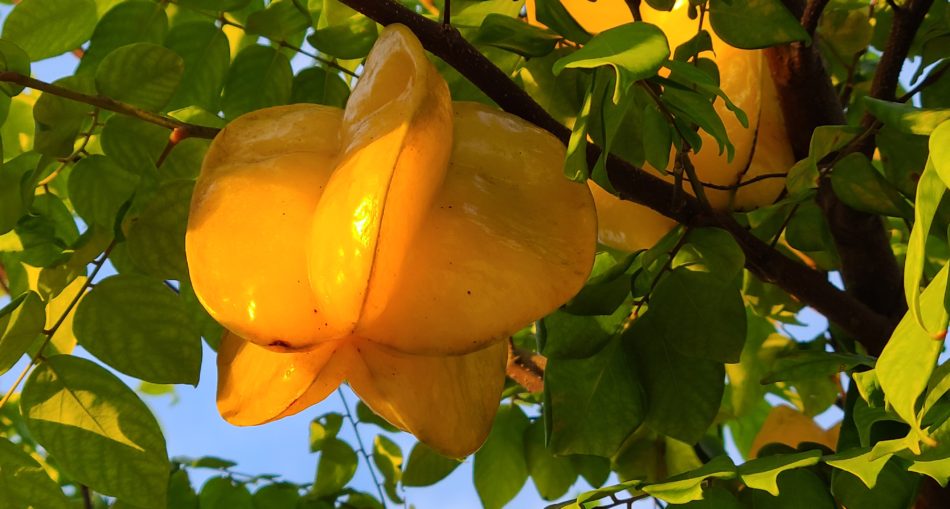Guyana is overflown with bountiful, colorful fruiting trees. Many can relate that when they were younger they would go from tree to tree – whether it’s the neighbor’s tree or their family’s tree – they would go, climbing it and picking whatever fruit they can reach. Guava, awarra, genip, whitey, cashew and not forgetting five fingers (carambola).
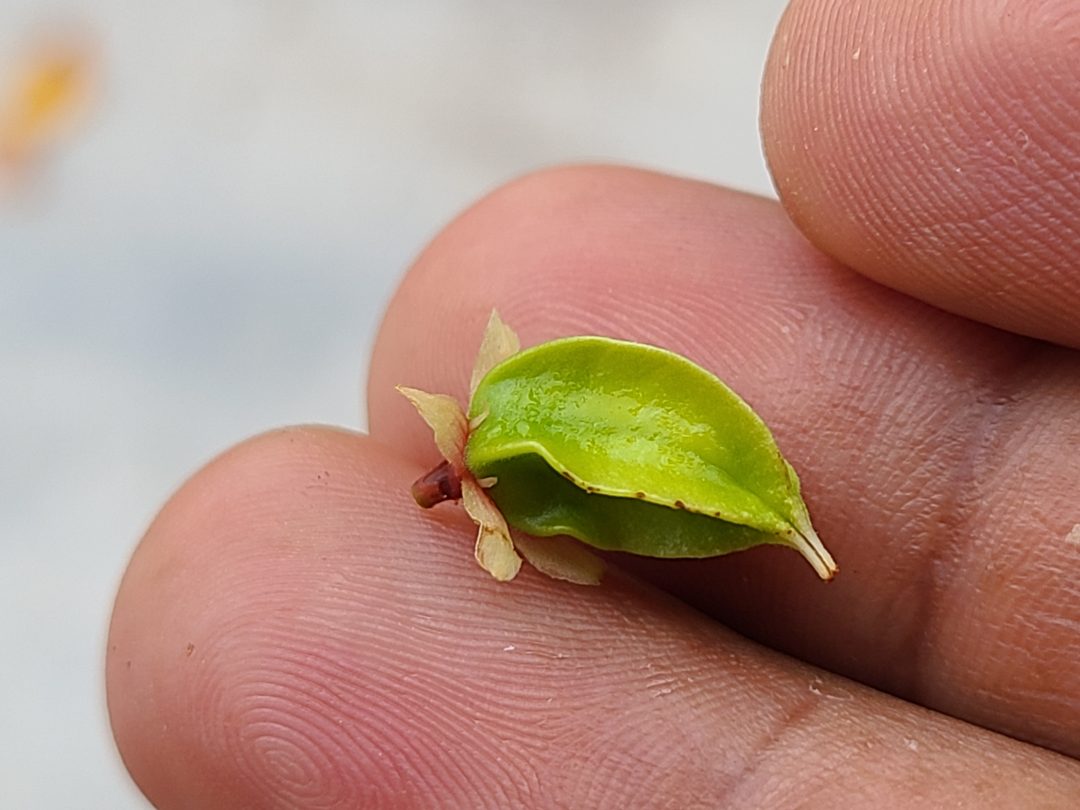
Five Fingers
Carambola (Avethoa carambola) is locally known as five fingers in Guyana and is also called starfruit. They have a tart, sour undertone, and an oxalic acid odor. The taste is difficult to match, but it has been compared to a mix of apple, pear, grape, and citrus family fruits. Unripe five fingers are firmer and sour, and taste like green apples. Five fingers are known for their star shaped cross section; it is basically in the shape of a five-point star.
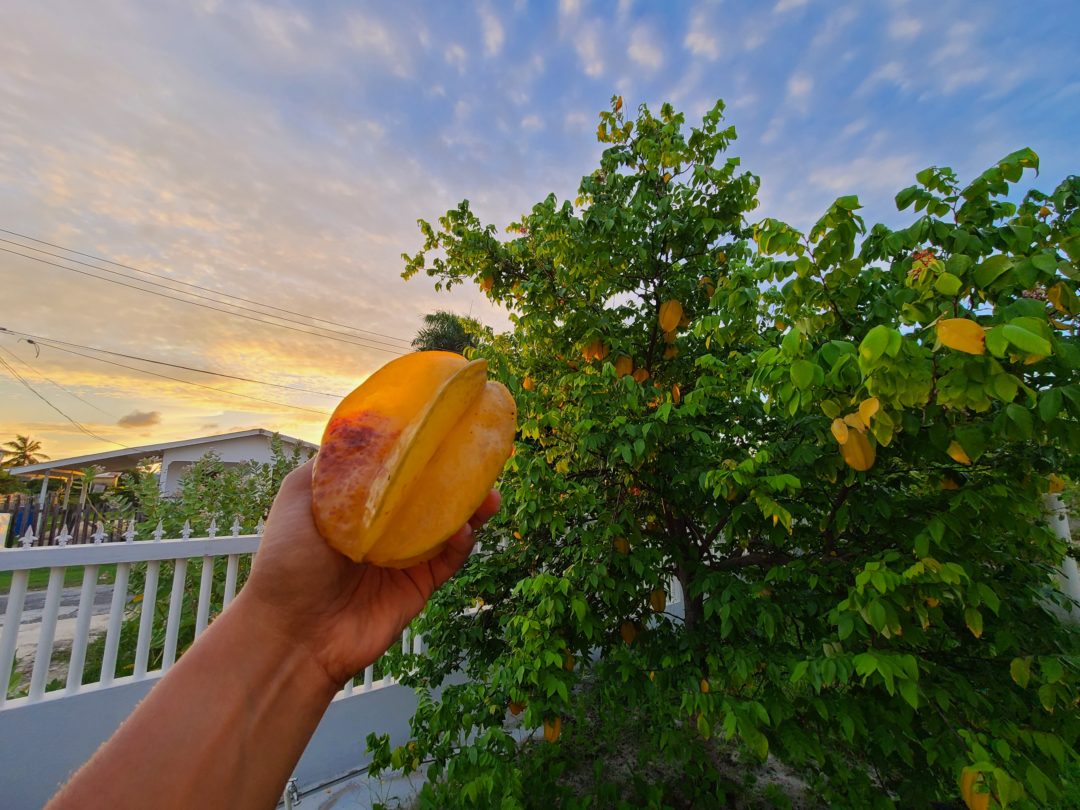
Five Fingers
Nutrients of Five Fingers
Raw five fingers are 91% water, 7% carbohydrates, 1% protein, and has negligible fat. The fruit is a decent source of several nutrients, especially fiber and vitamin C.
Nutrient Content:
- Fiber: 3 grams.
- Protein: 1 gram.
- Vitamin C: 52% of the RDI.
- Vitamin B5: 4% of the RDI.
- Folate: 3% of the RDI.
- Copper: 6% of the RDI.
- Potassium: 3% of the RDI.
- Magnesium: 2% of the RDI.
Health Benefits of Five Fingers
- Anti-inflammatory
- Heart-friendly
- Promotes weight loss
- Regulates blood pressure
- Boosts digestion
- Diabetic-friendly
- May improve metabolism
- Helps reduce cholesterol levels
- May improve respiratory health
The Five Fingers’ Color Pattern
Distinct changes in the five fingers’ color pattern occurs as the fruit begin to ripen which can be used to determine harvest maturity. As the fruit approaches maturity, the shade of green becomes lighter. Soon after this, a bit of yellow coloration becomes noticeable. As ripening continues, the fruit will turn more yellow and eventually become completely yellow. Finally, the fruit will become a deep yellow or orange color as it becomes fully ripened. The ripening stages of five fingers/carambola are categorized as green, light green, green yellow, yellow green, yellow, and orange as shown in the table below.
| Color | Description |
| Green | The surface of the carambola is completely green, of medium intensity. |
| Light Green | The surface of the carambola is completely light green. |
| Green Yellow | More than 50 % of the surface is green, with some yellow evident. |
| Yellow Green | More than 50 % of the surface is yellow, with some green evident. |
| Yellow | The surface of the carambola is completely yellow. |
| Orange | The surface of the carambola is completely orange. |
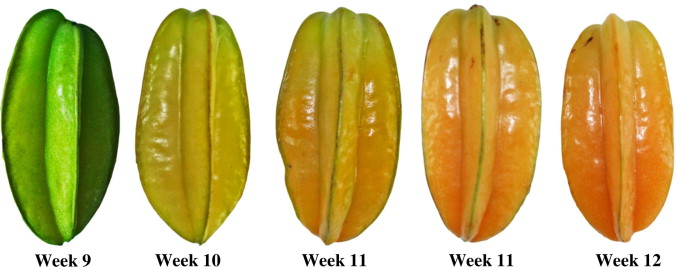
Green to Ripe Five Fingers – https://ars.els-cdn.com/content/image/1-s2.0-S0304423814002015-gr1.jpg
How to Eat Five Fingers
Make sure it is ripe, rinse it quickly with water, cut off the edges, slice it (cut the fruit across the broad side, dividing it into star-shaped slices), remove the seeds and finally eat!
Tip: Five Fingers come in two distinct flavors: sweet and sour. Their taste depends on the amount of oxalic acid concentration in them.
Five Simple Steps to make a Carambola Star Fruit Drink:
Step 1: Wash thoroughly. Use your fingers to take out any dirt there may be in the tiny crevices.
Step 2: Cut fruit cross wise using a sharp knife and cutting board. You can also trim off the green edges.
Step 3: Blend with desired amount of water.
Step 4: Squeeze pureed or mashed pulp through a sieve, adding a bit more water if so desired.
Step 5: Add sugar if desired and serve as it is or chilled.
Did You Know?
- Five Fingers can create an aromatic and very tasty off white classic wine that pairs wonderfully with fish and white meats.
- The trees are also grown as ornamentals for their abundant brightly colored and unusually shaped fruits, as well as for their attractive dark green leaves and their lavender to pink flowers.
- The juice of the more acidic sour types can be used to clean rusty or tarnished metal (especially brass) as well as bleach rust stains from cloth. They may also be used as a mordant in dyeing.
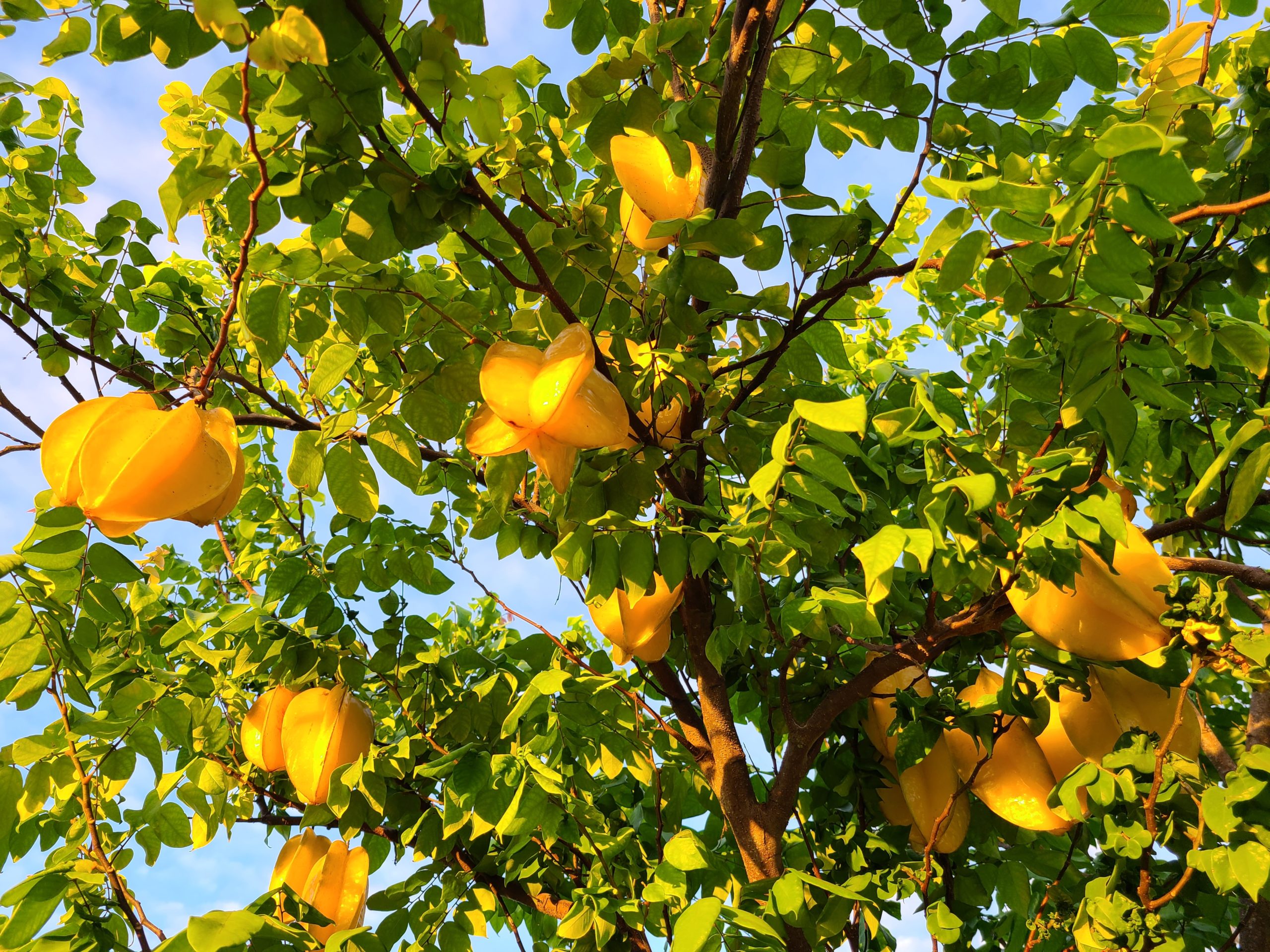
Five Fingers on the tree
Other Interesting Things about Five Fingers
- Ripe five fingers may also be used in cooking. In Southeast Asia, they are usually stewed in cloves and sugar, sometimes with apples. In China, they are cooked with fish. In Australia, they may be cooked as a vegetable, pickled, or made into jams. In Jamaica they are sometimes dried.
- Unripe and sour type five fingers can be mixed with other chopped spices to make relishes in Australia. In the Philippines, unripe five fingers are eaten dipped in rock salt and in Thailand, they are cooked together with shrimp.
- They can be added to salads or other fresh dishes. They can be added to bake cake, bread, pies and make pudding. They can make yummy smoothies, shakes and fruit cocktails.
- They can be used as an exotic garnish – You can decorate dishes and platters with sliced star fruit for an edible garnish. You can add sliced star fruit to the tops of tropical-flavor cakes or ice cream. Also you can decorate plates of tropical entrees, like teriyaki-marinated chicken, with artistically placed slices of star fruit. Another thing you can do is cut a small slice of the star fruit and hang it off the side of a cocktail glass.
Carambola/ Five Fingers/ Star Fruit in Guyana
Guyana is filled with trees that produces these tasteful fruits, especially in the countryside. Five fingers have a unique taste and they can be used and made into so many different things. From young to old enjoy eating this fruit in Guyana; remember the proper way to slice the fruit and consume, remember how to distinguish if the fruit is ripe and ready to harvest and finally just enjoy this beautifully star-shaped fruit.
Article References:
- http://agriculture.gov.gy/farmers-manual/
- https://www.uguyana.com/carambola-star-fruit-drink.html
- https://en.wikipedia.org/wiki/Carambola
- https://www.healthline.com/nutrition/star-fruit-101
- https://food.ndtv.com/health/carambola-fruit-heres-why-you-should-add-this-exotic-fruit-to-your-diet-1833845
- https://www.wikihow.com/Eat-a-Star-Fruit
- https://www.kupindo.com/Sadnice/32340745_Star-fruit-Karambola-sadnica-

